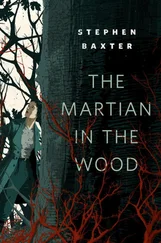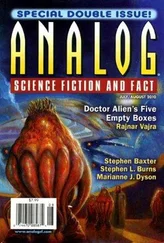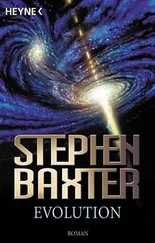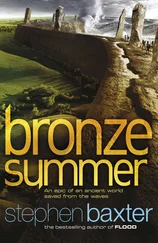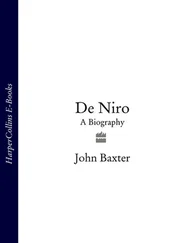Success gave Spielberg some leverage, and Freddie Fields was able to renegotiate his terms of employment. On 28 December 1970 Variety noted that he’d signed a five-year exclusive contract as a producer and a six-year non-exclusive deal as director. It was his first step on the road to total control, and an early recognition that his ambitions lay less in creative film-making than in the building of a production empire. A pecking order operated on the Universal lot. Feature directors looked down on the TV contingent as hacks, just as directors at other studios looked down on Universal’s features and the bright pastel ‘house style’ that extended even to credits, trailers and print advertising. Instantly recognisable, a Universal film was also instantly dismissable. In the fifties, TV had launched Arthur Penn, John Frankenheimer, Sidney Lumet and Sam Peckinpah, but in the seventies it was more often a graveyard of reputations. Spielberg was the only director under thirty-five at Universal. Most of the colleagues with whom he was to share the chores of Name of the Game and Night Gallery , like Robert Collins, Daryl Duke and Robert Michael Lewis, were ten years older, and saw little in their future but more of the same.
Feature film producer/directors were an elite. The emblem of their standing was a bungalow on the lot. The prosaic word belied the lushness of these buildings. ‘A sort of pseudo-English manor house,’ says screenwriter David Freeman, ‘[they were] a bungalow the way summer houses in Newport are cottages.’ Hitchcock’s, the most lavish, had two levels, with a dining room, screening and editing rooms, and its own art department. Don Siegel rubbed along in something the size of a suburban house. Billy Wilder had two storeys on a hill, past which the tour trams coasted in silence to avoid disturbing him and I.A.L. Diamond, at work on The Front Page .
Spielberg hungered for a bungalow. Instead, he had a corner office in the Black Tower, well below the seventeenth floor where Wasserman and Sheinberg controlled his destiny. From there, he looked out on a future that contained, he was beginning to discover, nothing as solid as the films of Wilder or Hitchcock. He had plenty of ideas for features and, now that he was back on the inside, no shortage of people to pitch them to. But everywhere he met a brick wall. His career may have looked to be up and running, but it became increasingly clear that he was jogging on the spot.
Universal incorporated Night Gallery with McCloud , San Francisco International Airport and The Psychiatrist into an omnibus for NBC, Four-in-One . Writer/director Jerrold Freedman was in charge, and Spielberg joined his team. It was a useful move. ‘He had his own long-haired film society right in the heart of Universal Studios,’ he says of Freedman. ‘He employed a number of writers, directors, people dealing with esoterica, and he hired people from his college and people he knew from the East. I was just a young person, whom he liked at the time, and to whom he said, “Here, do two Psychiatrists for me.”’
The Psychiatrist , written by Richard Levinson and William Link in the school of Ben Casey , Doctor Kildare and other successful doctor shows, featured Roy Thinnes as an idealistic LA shrink and Luther Adler as the obligatory older, more cynical colleague. Spielberg did The Private World of Martin Dalton (10 February 1971) and Par for the Course (10 March 1971). Martin Dalton was cribbed from a famous incident in Robert Lindner’s collection of psychiatric case histories, The Jet Propelled Couch . A disturbed twelve-year-old (Stephen Hudis) invents a fantasy universe from TV and comic books, and begins to retreat into it. Responding to a subject close to home, Spielberg seized the chance to create a surrealist dream world and also to work with young actors, for which he already showed a flair.
It was Par for the Course , however, with golf pro Clu Gulager coming to terms with his imminent death from duodenal cancer, which attracted most attention, and which Spielberg regards as his best TV work. Always most comfortable illustrating an emotion than conveying it in dialogue, he wrote a scene in which two buddies bring Gulager in hospital a gift they know he will relish – the cup from the eighteenth hole at his course, which they’ve dug out of the centre of the green. Gulager breaks down and crushes the dirt and grass over his head.
Levinson and Link were so pleased with Par for the Course that they asked for Spielberg to direct Murder by the Book , the first regular episode, after two feature-length pilots, of the detective series Columbo . The role of the Los Angeles Police Department’s scruffiest, least tidy but most perspicacious detective, who allowed himself in each episode to be patronised by his arrogant quarry before springing a brilliant deductive trap at the end, had been planned for Bing Crosby. He turned it down, however, when it looked as if the series’ success might interfere with his golf. Peter Falk replaced him. The series’ story editor, Stephen Bochco, later the force behind Hill Street Blues and LA Law , wrote Murder by the Book , in which Columbo unmasks crime writer Jack Cassidy as the murderer of his collaborator Martin Milner. It aired on 15 September 1971 to excellent reviews, but allowed Spielberg little room for creativity. He did his best, opening the film not with the conventional theme but the sound of a typewriter, and setting up some sharp angles inside Milner’s high-rise office to exploit its spectacular view of Los Angeles, but in most respects the film is routine.
Spielberg also made an episode of Owen Marshall, Counselor at Law called Eulogy for a Wide Receiver , about a football coach accused of feeding amphetamines to his players. However, any charm that series TV might have held for him was running out. In particular, its casts of B-movie players and studio trainees grated increasingly. ‘At twenty-three, I was already saying, “Life’s too short to worry about the size of someone’s trailer. Or the fact that they don’t like the hairdresser because the hairdresser has coffee breath.” Little petty things used to make me crazy.’
If Spielberg needed a further caution that TV eroded talent, he could find it in the experience of Rod Serling, who as Night Gallery dragged into its second year with diminishing ratings, found most of his stories rejected. As the studio even barred him physically from story conferences and began buying scripts of its own, with the emphasis on action, it became clear to him that he’d been hired mainly as a master of ceremonies. ‘I’ll just be the front man, a short hunk of gristle,’ he told a reporter. ‘[ Night Gallery ] is not mine at all. [It’s] another species of formula series drama.’
After the autumn of 1971 Spielberg wasn’t to escape such problems, but at least he encountered them on a higher plane, since Universal had by then grudgingly given him his first true feature and first international success. Much was to change for him, and for New Hollywood, with the making of Duel .
We’re old now, but when we were the New Hollywood…
Steven Spielberg. 1994
THE YEAR 1971 carried a sense of threat for Americans. In February, an earthquake rocked the San Fernando Valley, shaking Universal’s black tower to its foundations and toppling some of the ancient sets. Sixty-two people died when old apartment houses collapsed all over the city, as if they too had been built not to last but to act as movie backgrounds. In September, convicts rioted at Attica prison in upstate New York, took guards prisoner and plunged into a bloodbath. Servicemen were returning home from Vietnam at an increasing rate, but the war remained a running sore. Lieutenant William Calley was sentenced to life imprisonment in March for the My-Lai massacre, only to be released to house arrest by President Nixon pending his appeal.
Читать дальше

